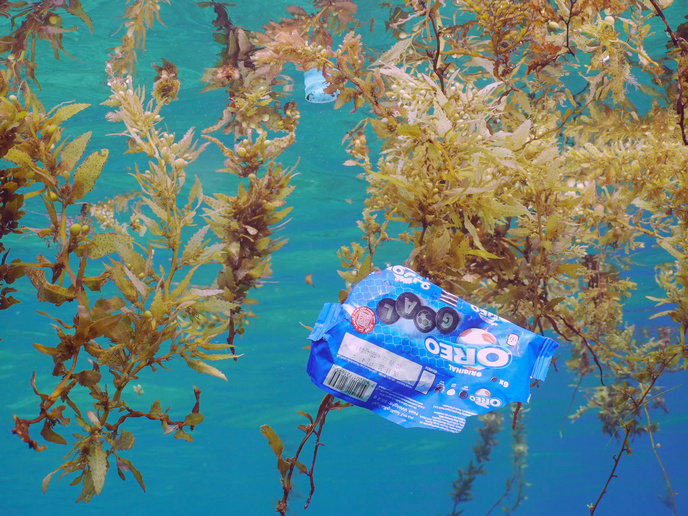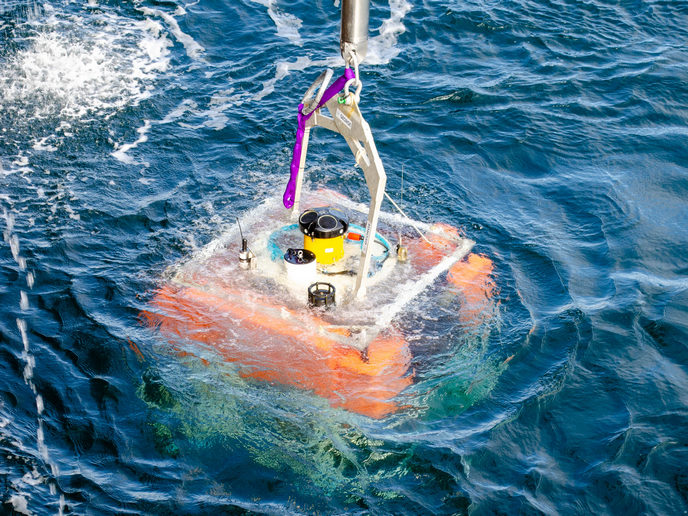Seaweed beds are hotspots for plastic pollution
Plastic debris and marine litter have unfortunately become just as much a part of a coastal ecosystem as sand and seaweed. But a walk along the beach may lead one to believe that seaweed actually traps plastic, preventing it from further polluting the surrounding environment. But looks can be deceptive. Even though plastic debris does get trapped in seaweed beds, according to the EU-funded SCRAP project, this is only half the story. The project saw field researchers take samples of various seaweed species and the sand beneath them and remove every plastic particle caught in the fronds. By comparing these samples with nearby bare sand, they were able to judge whether seaweed mostly traps litter or helps move it into sediments. “Comparing vegetated and bare sand helped us figure out whether seaweed acts more like a sticky trap or a transport route for moving plastics into sediments,” says Hoi Shing Lo, a researcher at Stockholm University(opens in new window), the project’s coordinating partner. What they found is that seaweed beds act as hotspots for plastic pollution. “Plastics accumulate in these underwater forests, getting trapped among the fronds and settling into the sand below,” adds Lo.
Microplastics amplify the problem
This is where things get problematic. “The problem isn’t so much the physical presence of plastics, but rather the chemicals leaching from them and other environmental factors, such as suspended particles and biofilms,” explains Lo. To illustrate, the project investigated sediment resuspension, where mud and sand are churned up – something that happens very frequently during storms, dredging or even propeller wash. When those fine particles lift into the water column, they carry nutrients and contaminants that were otherwise locked away. In their experiments, which were conducted both in the field and in the lab, researchers found that adding microplastics made the suspension last longer and stay denser. Based on this, researchers concluded that extra turbulence released more of the pollutants bound to the sediments, reduced water clarity and created a sharper chemical pulse that can stress algae. “In other words, microplastics don’t just intensify the amount of resuspended mud in water, they amplify the whole disturbance and magnify its ecological consequences,” notes Lo.
Why, how and where to monitor plastic pollution
These findings are significant because they reveal that the impact of plastic pollution should be addressed in the context of real environments. “It’s not only about visible litter, chemical leachates and biofilms can interfere with core ecological processes, such as photosynthesis, nutrient cycling and algal growth regulation,” remarks Lo. Seaweed beds, which are often biodiversity hotspots, turn out to be especially vulnerable. According to Lo, this means environmental agencies, coastal managers and anyone working on marine habitats need to rethink why, how and where they should monitor plastic pollution. “Vegetated habitats aren’t just hotspots for plastic, they can also be key allies, offering natural services that help trap, retain and even break down plastic litter,” concludes Lo. The project’s research is set to be featured in a front cover article of an upcoming issue of ‘ACS Environmental Au’(opens in new window). The SCRAP project received support from the Marie Skłodowska-Curie Actions(opens in new window) programme.







